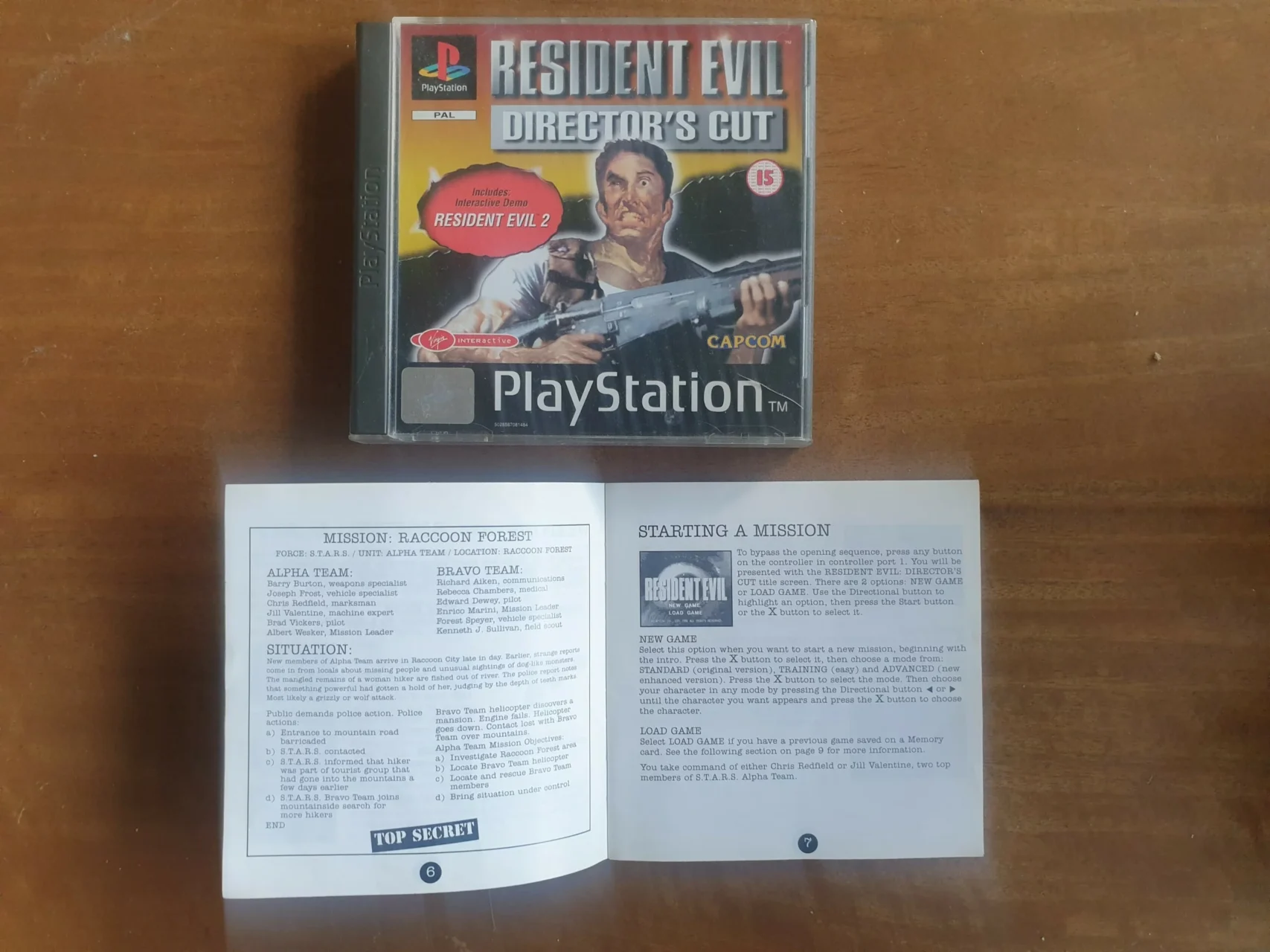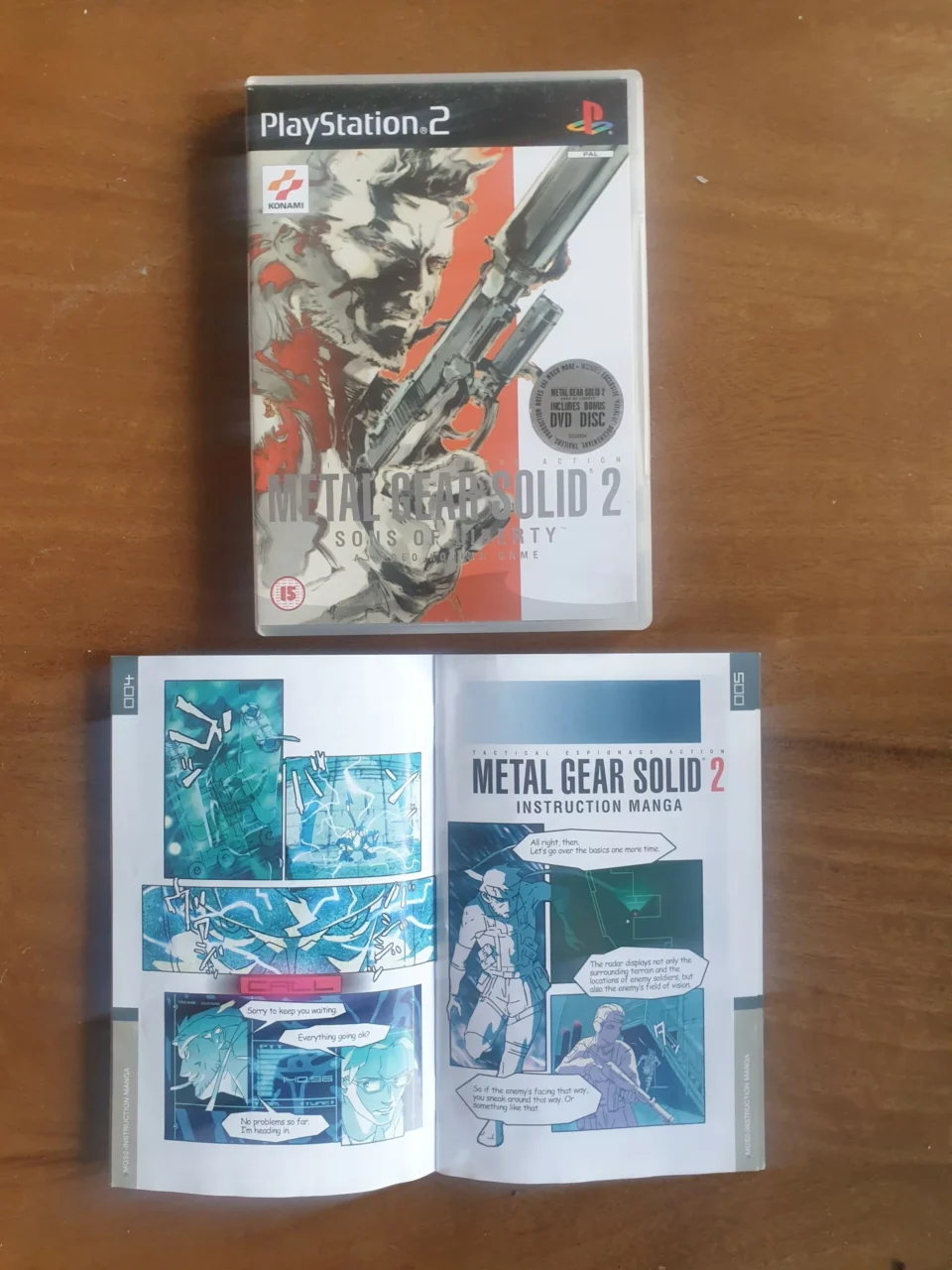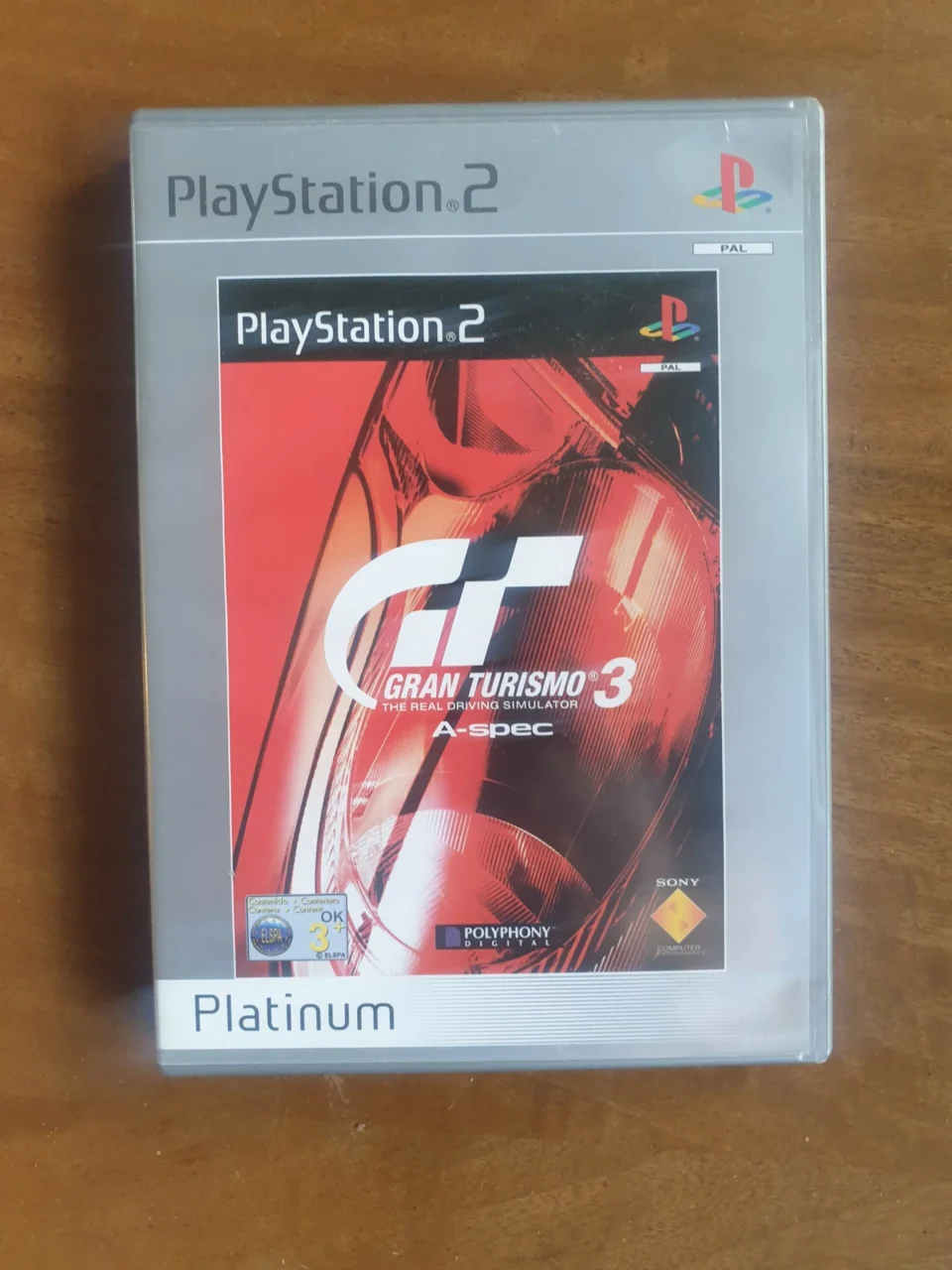One of the things I’ve learned since joining 3di is just how ubiquitous technical writing is, and how little you notice it when it’s done well. Are you looking to navigate a boat? There’s a technical manual for that. Want to use a smart mirror to exercise? Oh, there’s an instruction manual for that. How about steaming some hay? Believe it or not, there’s a user manual for that too. Apart from my well-documented penchant for midnight hay steaming, there is one form of technical communication I came into contact with a lot during my youth, although I barely noticed it at the time – video game instruction manuals.
For those of you born this century, back in the dark days before Steam and other similar digital storefronts, you actually had to leave your house and go to a shop to purchase video games (I know, it sounds so Dickensian, but this was the harsh reality of living in the late 90s). This physical copy of the game included an instruction manual, which I usually read on the bus ride back home. Some were very dry affairs, including only factual information such as the instructions on how to operate the game, what the control scheme was, and how to get in contact with the company for technical support. However, some took a different approach, using the manual as an opportunity to extend the game’s lore, improve the user experience and get gamers excited about playing the game. So much so, I still remember reading these manuals and the lessons they taught me more than 20 years later.
So, in this article, I’m going to take you through some interesting examples of video game instruction manuals, what lessons technical writers can learn from them, and how they demonstrate that good technical writing can really make an impression on the reader.
Resident Evil
Released in 1996, the original Resident Evil game hugely influenced a generation of gamers and game designers. It gave rise to a franchise that has produced countless games, books, films, TV shows and even theme park rides, all under the Resident Evil umbrella. It’s still going strong today, with its 8th instalment selling over 8 million copies worldwide.
Back in 1996 however, Resident Evil was at the forefront of a new gaming genre (later coined ‘Survival Horror’), and needed players to get to grips with a lot of new concepts such as a ‘tank’ control scheme that worked with the games fixed camera angles, managing an inventory system that included a limited number slots, and a novel ‘save’ system that involved finding an in-game typewriter and ink ribbon. These, and many more, of Resident Evil’s concepts and gameplay features were not widely established in 1996, and the success of the game would rely partly on getting gamers to understand these features quickly, so they could get on with the important business of playing the game.
So, how did the creators of Resident Evil’s instruction manual get users to not only read the manual, but take in the information to effectively grasp these new concepts? Well, the instruction manual was in fact designed as a police dossier issued by the fictional ‘Raccoon City Police Department’, complete with chunky typewritten font. The essential but less interesting technical information, such as how to load, control and save the game, and operating the console, are presented as ‘Mission Set-ups’ nestled between the police reports, character biographies and weapon specifications that all helped build up the game’s back story.

Personally, I read this manual from cover to cover several times – it not only set the scene and told the story of the game, but effectively informed me of new concepts such as the control scheme, managing an inventory, and using the in-game typewriter to save my progress. It’s a great example of how well-crafted technical documentation can quickly onboard users, getting them used to new concepts and ways of using your products. You can read an online version of the original instructions here. Unfortunately, the manual doesn’t give you any tips on how not to wake your parents at midnight when you first encounter some unfriendly zombified Dobermans (Resident Evil fans, you know which bit I mean!).
Want to find out more?
Metal Gear Solid 2: Sons of Liberty
Jumping forward to 2001, Metal Gear Solid 2: Sons of Liberty was released on the PlayStation 2, and was the sequel to the smash hit Metal Gear Solid released on the original PlayStation. The move to a new console greatly increased the possibilities of what could be achieved in video games, and Metal Gear Solid 2 fully embraced this – they used more graphically impressive environments, increasingly sophisticated enemy AI, and many new ways for players to interact with the game world.

This led to a potential problem though. While players of the original game would be familiar with Metal Gear Solid’s ‘Tactical Espionage Action’ concept, the move to a new console generation opened up a world of advanced interaction possibilities, new strategies for sneaking past your enemies, and features like ‘first person view’. The makers of Metal Gear Solid 2 needed to introduce these new concepts in a way that players could quickly understand, and so they created the ‘Metal Gear Solid 2: Instruction Manga’.
The Instruction Manga was a comic strip. It showed the in-game character ‘Solid Snake’ traversing the game much as the player would. It used Solid Snake’s interactions to introduce new features like first person view, the inventory system, and holding up guards, while a radio conversation with a character called Hal introduced the controls you used to perform the actions. Again, much like Resident Evil’s dossier, the Instruction Manga introduced new concepts in a fun and interesting way, while getting players up to speed quickly. It was also a great example of using illustration and animation to onboard new users – something we at 3di have helped companies such as Promethean achieve in their documentation.
Gran Turismo A-Spec
Staying with PlayStation 2, Gran Turismo A-spec was also released in 2001, and billed as ‘the real driving simulator’. Players could look forward to what was, at the time, the most realistic driving game available on a console. Gran Turismo A-spec boasted a huge lineup of well-known car manufacturers, tracks based on real-life locations and realistic driving physics.
Like Metal Gear Solid 2, Gran Turismo A-Spec was the sequel to an original PlayStation game, and as such, was much more complex and had many more features than the original. While Gran Turismo had many of the same issues as Metal Gear Solid 2, rather than trying to make the complexities of the game simpler, Gran Turismo A-Spec leaned into this complexity. Since the game billed itself as ‘the real driving simulator’, it was a safe assumption that players were there for the complexity, and so it was made a feature of the manual. As well as exhaustive lists of car makers, parts manufacturers and real-life race advertisers, a large section of the manual written by real-life racer and driving school owner, Skip Barber, who explained how the principles of physics affected car handling.

True story, many years later I learned to drive a car in real life. During my first lesson, the driving instructor complimented me on how well I handled a car considering I hadn’t had any previous experience. When he asked how I knew about braking before entering a corner, or why I was always checking my mirrors without being told to do so, I had to confess this had been drummed into me by playing Gran Turismo. Surprisingly, this wasn’t the first time he had heard this.
While it might seem counterintuitive to some technical writers, in the right circumstances, making complexity a feature of a technical manual can be an advantage. If your prospective customers like your product because it offers a lot of complicated features or a high degree of customisation, then lean into it. We’ve used this technique ourselves with customers such as dCS Audio who make premium quality audio equipment for audiophiles
Want to find out more?
Only scratching the surface
There are many, many more weird and wonderful examples of technical writing in video game manuals. We could write a whole article about the Vault Dwellers survival guide for Fallout, which takes the form of a manual produced by in-game company Vault Tech, with later additions made by the game’s characters to humorous effect. Or there’s the Guide to Liberty City, which helps players of Grand Theft Auto 4 get to grips with the complex environment of Liberty City, the range of activities you can undertake, and how you interact with the world. There’s also Hitman: Blood Money’s Guide to Assassination, which presents itself as a clandestine guide on how to commit in-game assassinations, whilst giving the player mundane information such as how to properly use the game’s menus and control schemes.
These manuals all demonstrate the same point – making your user manual part of your larger content and marketing strategy can work wonders. Firstly, making your manuals interesting will get your users to read them, which in turn will help them to get the most out of your products. Secondly, manuals can work as an extension of your product, setting expectations and getting the user excited about using it. Thirdly, it can reduce the amount of customer churn by improving customer experience – you can read more about this in one of my earlier blogs here.
Game over?
Since my early gaming years, we’ve seen a gradual phasing out of hard copies of video game manuals as digital storefronts make physical media increasingly obsolete. However, this doesn’t mean that the manuals have gone, just that the methods of delivery have changed. We’ve seen many manuals morph from paper to downloadable PDFs to digital instruction portals. Some have even taken this a step further, with the Fallout 4 special edition shipping with a replica of the in-game help device, the ‘Pip Boy’, that can turn your smartphone into a real-life version of the Pip Boy, who you can interact with to perform actions in the game. If you want to learn more, you can see it in action here.
I hope you’ve enjoyed my brief look at video game manuals, and the lessons that technical writers can learn from them. While some of these approaches may be unorthodox, they are nevertheless great examples of how thinking outside the box can help get users onboarded with new concepts, controls, and ways of thinking about playing games, and in turn have helped make these games very successful. And for me, it certainly made some of those bus rides home pass much quicker.
Related articles

How to ensure your technical documentation works
One of our team explains how you can ensure your documentation works

5 reasons why product documentation is the marketing department’s secret weapon
How does product documentation influence marketing? Find out here

